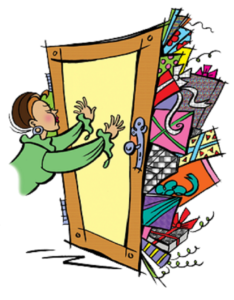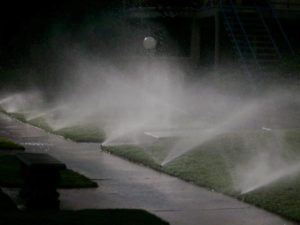Home Insteading With Cooperative Extension (Week 17)
go.ncsu.edu/readext?708911
en Español / em Português
El inglés es el idioma de control de esta página. En la medida en que haya algún conflicto entre la traducción al inglés y la traducción, el inglés prevalece.
Al hacer clic en el enlace de traducción se activa un servicio de traducción gratuito para convertir la página al español. Al igual que con cualquier traducción por Internet, la conversión no es sensible al contexto y puede que no traduzca el texto en su significado original. NC State Extension no garantiza la exactitud del texto traducido. Por favor, tenga en cuenta que algunas aplicaciones y/o servicios pueden no funcionar como se espera cuando se traducen.
Português
Inglês é o idioma de controle desta página. Na medida que haja algum conflito entre o texto original em Inglês e a tradução, o Inglês prevalece.
Ao clicar no link de tradução, um serviço gratuito de tradução será ativado para converter a página para o Português. Como em qualquer tradução pela internet, a conversão não é sensivel ao contexto e pode não ocorrer a tradução para o significado orginal. O serviço de Extensão da Carolina do Norte (NC State Extension) não garante a exatidão do texto traduzido. Por favor, observe que algumas funções ou serviços podem não funcionar como esperado após a tradução.
English
English is the controlling language of this page. To the extent there is any conflict between the English text and the translation, English controls.
Clicking on the translation link activates a free translation service to convert the page to Spanish. As with any Internet translation, the conversion is not context-sensitive and may not translate the text to its original meaning. NC State Extension does not guarantee the accuracy of the translated text. Please note that some applications and/or services may not function as expected when translated.
Collapse ▲4-H at Home
Camaryn Byrum, 4-H Agent
10 Tips for Healthy Eating
Learning about the nutrients that our foods contain allows us to make the best choices for healthy eating. To help make healthier food choices, use these ten tips from the USDA:
1. Balance your calories. To balance your calories, you need to know how much food you eat and how much exercise you do each day.
2. Enjoy your food, but eat less. Take the time to fully enjoy your food as you eat it. Eating too fast may lead to eating too many calories.
3. Avoid oversized portions. Use a smaller plate, bowl, and glass. Portion out foods before you eat.
4. Eat more vegetables, fruits, whole grains, and fat-free or 1% milk and dairy products. Make these foods the basis for meals and snacks.
5. Make half your plate fruits and vegetables. Choose an array of colorful fruits and vegetables.
6. Switch to fat-free or low-fat (1%) milk. They have the same amount of calcium as whole milk, but fewer calories and less saturated fats.
7. Make half your grains whole grains. Eat a whole-grain product instead of a refined product.
8. Cut back on foods high in solid fats, added sugars, and salt. Use these foods (cakes, cookies, ice cream, candies, sweetened drinks) as occasional treats.
9. Compare sodium in foods. Use the Nutrition Facts Label to choose lower sodium versions of foods. Select canned foods labeled “low sodium,” “reduced sodium,” or “no salt added.”
10. Drink water instead of sugary drinks. Cut calories by drinking water or unsweetened beverages. Soda, energy drinks, and sports drinks are major sources of added sugars and calories.
Activity: Download these activity sheets. Use the MyPlate Worksheet for Kids to track your food intake. For one day, keep track of ALL of the foods you eat. Also keep track of how much you eat of each food. Write all of your food choices in the left-hand column. Next, list each food in its respective food group. For example, if you had an apple for breakfast, list it in the fruits group. Now add up your totals for each food group. Compare your totals to the goals for your age and gender. It is a good idea to track your foods on a regular basis to make sure you are eating enough from each food group.
Family and Consumer Sciences at Home
Mary Morris, Family and Consumer Sciences Agent
We Could All Use a Lot Less Clutter (Written By: Christine Smith, Retired Wayne County Family and Consumer Science Agent)
Did you know that clutter has a profound impact on your emotional, mental, physical, and spiritual well-being? It’s true. A healthy home has healthy energy and healthy energy is moving energy.
If you have clutter, the energy in your home is stagnant. And if you live in that stagnant energy, then the energy in your body will become sluggish as well. Clutter is evidence of many things: poor habits, lack of organization, sentimental attachment, and too much stuff.
When you clean and de-clutter you make room for new and refreshing energy. You’ll have space for new experiences, happy emotions, enhanced creativity, and positive thoughts.
Here is the big question, how do we begin to clear the clutter? Do you justify your decision to hold on to “stuff” like me by saying “I can’t dispose of that because it holds so many memories?” In order to break free, know that it is ok to get rid of things you don’t WANT or NEED.
Organizehome.com recommends a method you may want to try to help you control clutter. The Four-Box Method forces you to make a decision on every item in question. Here is how it works. Gather three boxes and a large trash can. Label the boxes: “Put Away”, “Give Away/Sell” and “Storage. The trash can is for all items you decide to throw away. Separate all the items that clutter your living space and place it in the appropriate container. At the end of the de-cluttering session, reserve 10 to 15 minutes to empty the boxes.
The closet and the kitchen are two areas in the house that often harbor clutter. Let’s take a look at how you can begin to de-clutter these areas.
The Overstuffed Closet: Your closet is where you start each day. It’s where you get your first sense of who you are representing.
Most closets have about 10-20% of clothes and accessories that you actually wear, and the rest sits in there gathering dust and taking up space. We keep the clothes that are too small in the hope that we will lose weight and be able to wear them again. We keep clothes that are too big just in case we gain weight. We keep the outdated styles because we know that fashion styles repeat themselves. And, let’s not forget about all those shoes. Some of them have never been worn and others are too small or uncomfortable. Donate these items to make room for the clothes and shoes that fit.
Are you holding on to those special outfits for an occasion such as a wedding or night out on the town? The rule is if you have not worn it in a year donate it. And if you are saving your wedding dress for your daughter to wear one day, be honest, if it has puffy sleeves and lace from the 1970’s you may want to give it to a thrift store or donate it to DonateMyDress.org.
The Kitchen: Are your kitchen counters cluttered with appliances, cookie jars, microwave, etc.? How can you prepare food if you have no space? Start by weeding out everything that is not being used, group similar items together and find a home for everything. If you have an appliance that is broken; throw it away. Take an inventory, donate or trash broken or duplicate items.
Is the cabinet that stores your plastic containers a safety hazard to open? Go through the pile if it is stained, has no lid or has seen better days; put it in the recycle bin.
Making your home less cluttered may help eliminate some stress in your life.
Thoughts to ponder:
“Bottom line is, if you do not use it or need it, it’s clutter, and it needs to go”. – Charisse Ward
Horticulture at Home
Katy Shook, Area Horticulture Agent
Watering An Established Lawn In Summer, F.A.Q.
Whether you inherited an irrigation system with a new home, or you are curious about what you need to be doing, check out these tips for managing irrigation in a home lawn.
Q: Do I need to water my lawn on a regular basis?
A: No. Unless you’re pushing high performance, irrigation only needs to be applied when lawns are showing signs of stress. A bluish-gray color; footprints that remain after walking; and wilted, folded or curled leaves are hints that it’s time to water.
Q: What time of day is best to water my lawn?
A: Water in the early morning if possible. This is the best time to water because it reduces the risk of disease, water loss through evaporation, and improper water distribution.
Q: How much water should I give my lawn?
A: Water to a depth of 6 to 8 inches to encourage deep rooting. For sandy soils, applying 0.5 inch of water every third day is usually sufficient. Use a rain gauge to determine how much water is being delivered in a certain period of time. Adjust automatic irrigation systems to supplement rainfall so that the lawn is not over-watered.
Q: My lawn is turning brown, is it dead?
A: No. Brown, withered leaves are normal signs of dormancy; don’t be alarmed. Turfgrasses are able to withstand prolonged periods of drought. In the absence of rain, water dormant lawns every three weeks to prevent turf damage. Avoid over-fertilizing and raise the mowing height to reduce moisture stress.
For more information about caring for lawns in summer, contact Katy Shook at (252) 482-6585.





